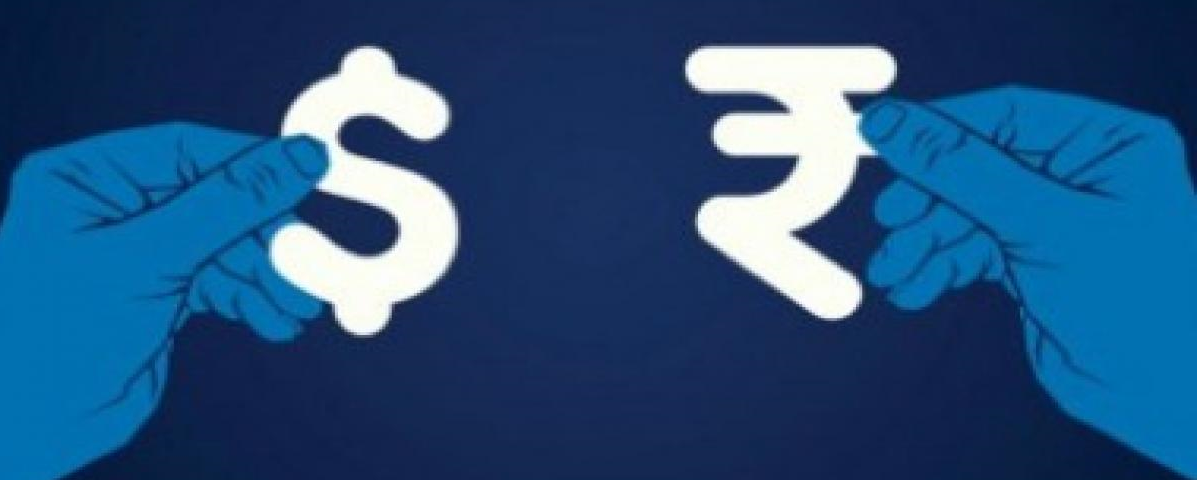Indian rupee ended the week on a sour note following are bound in the greenback and weaker Chinese currencies. The local unit marked this second weekly decline in a row to settle at 82.77, the weakest closing since February 2023. Even after strong foreign fund inflows, the rupee tumbled post 82.50. Technically, spot USDINR has resistance at 83.10 and support at 82.30. The bias remains bullish as long as it sustains above 82.30. The US Dollar Index is moving lower while the USD INR is moving higher, signaling a growing divergence in the currency market. The RBI’s move to request that people return their 2000 notes to banks at home in India may result in a rise in rupee liquidity, which might further raise the interest rate disparity versus the local currency. A lower forward premium results from a smaller interest rate differential. There have been rumors of a cash dollar shortage in the system, which has caused the need for buy-sell swaps to lend dollar liquidity to further compress the forward premium. Low forward premiums deter carry trades and promote reverse carry because it is so inexpensive to maintain a long position in the USDINR. Exporters’ supply is constrained by the low carry, which could lead to an increase in importers’ demand for hedges. Overall, it decreases the dollar inflow to the forward market. India’s foreign exchange reserves continue to rise and are edging toward $600 billion, hitting a nearly one-year high. In the week that ended on May 12 for which data is available, the reserves rose by $3553Mn to $599529 million.
Dollar Index lost to 102.43, down by 0.25% last week against the previous week’s close of 102.68
On Friday, the dollar declined for the first time in four days, paring its weekly advances to 103.20, up 0.50 and the second straight week of advances, as Fed Chair Jerome Powell offered a clear signal of a June rate pause. Powell said policymakers can now “afford to look at the data and the evolving outlook to make careful assessments.” The US Dollar Index suffered on Friday as a result of the US Fed Chair’s dovish remarks. The US debt ceiling negotiations have not yet produced results. There is still agreement among traders that a deal can be reached; therefore, they have not given up on the talks just yet. The US Treasury Secretary has issued a warning that if the debt ceiling is not lifted by June 1st, the US may stop making debt payments. Private estimations have suggested a more flexible schedule, with some predicting that the patient will most likely pass away by the end of July. However, we do not believe that traders would favor a June deadline for negotiations set by US lawmakers. Therefore, if the US does not lift its debt ceiling by the middle of next week, financial market volatility could considerably rise. In the week ahead, minutes of the May 2-3 FOMC meeting to reveal how the committee came to a rate of 5.25% as the peak, and PCE data to underscore the persistence of US inflation. UK CPI to show base effects dragging inflation down. China’s lenders are expected to keep prime rates steady and Japan’s CPI will show the Bank of Japan facing the wrong type of inflation.
What lies ahead?
The rupee spot (CMP: 82.83) remains vulnerable amid risk aversion and Debt ceiling uncertainty persists.
- The rupee remains vulnerable and a break of 83 is a possibility if the uncertainty persists. The base case scenario remains that the debt ceiling increase is eventually passed, and the risk aversion-led Dollar move will subside.
- We think the RBI may take active action to reduce volatility, particularly as it approaches the all-time high and crucial breakout zone of 83.00 and 83.25, as the USDINR up move in the offshore market is not being supported by the US Dollar.
- The longer-term inflation/recession move is still a while away and the risk for the Rupee towards the year’s end remains high. A typical range for USDINR remains near 82.40-83.00 levels on a weekly basis.
- This could be possibly another good week for the dollar to sustain above 103.50 on a weekly closing basis. The debt-ceiling roller coaster continues, but markets remain cautiously confident Biden and McCarthy will reach a deal by the end of this week. This, combined with hawkish hints by Fed officials and minutes could prompt another reprising higher in US rate expectations, and keep the dollar supported a bit longer.

